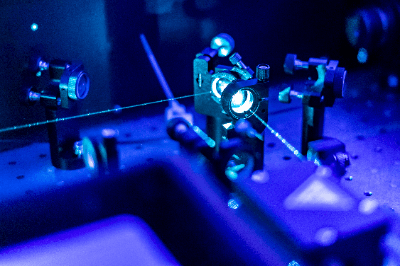What Is a Mirror?

A mirror is a type of optical device that reflects light.
Mirrors are common household items, but a wide range of mirrors exist in the industrial field. For example, there are spherical mirrors with a spherical reflecting surface, toroidal mirrors with different curvatures on the X and Y axes, parabolic mirrors that make all light emitted from a focal point parallel (or, conversely, focus parallel light to one point), and ellipsoidal mirrors that focus light from one point to another.
Reflective surfaces are often made of high-purity aluminum, and thin films of silver or gold are also used, with gold thin films being particularly useful for reflecting infrared light.
Uses of Mirrors
Mirrors are used as dressing and vanity mirrors in homes. Industrially, they are used in optical instruments such as spectrophotometers, photodetectors, and FTIRs as measuring instruments.
As optical equipment for consumer products, they are used in projectors, cameras, CDs, DVDs, and microscopes.
In optical equipment using lenses, mirrors bend the optical path, allowing for more compact designs compared to lenses alone.
Principle of Mirrors
In addition to mirrors, lenses are also used as optical elements in light paths. Unlike lenses, mirrors reflect light in the same way at all wavelengths, avoiding chromatic aberration caused by differences in refractive index with lenses.
Manufacturing mirrors with free-form surfaces has become possible with methods like diamond turning, where aluminum is directly machined with a diamond-turning machine to create mirrors with a wide range of curved surfaces.
Structure of Mirrors
Mirror shapes include flat, spherical, and aspherical mirrors.
1. Plane Mirror
A flat mirror that reflects images in one direction only.
2. Spherical Mirror
A mirror with a surface shaped like a cutout of a sphere. It can be convex or concave.
3. Aspheric Mirror
A mirror with a curved surface other than a spherical surface, such as parabolic mirrors used in reflecting telescopes.
Types of Mirrors
1. Clear Mirror
Standard mirrors used in everyday life, typically 5 mm thick.
2. High Transmittance Mirror
Less bluish than clear mirrors, suitable for beauty salons and boutiques.
3. Moisture-Resistant Mirror
Also known as epoxy mirror, resistant to rust and stains, and suitable for wet environments.
4. Gray Mirror
Dark gray glass is suitable for various environments.
5. Bronze Mirror
Bronze-colored glass is used in restaurants and boutiques.
6. Tapered Mirror
The surface is treated to create an indirect lighting effect.
7. Thin Sheet Mirror
Thin mirror with a thickness of 2-3 mm.
8. Magic Mirror
Appearance changes based on lighting conditions, used for privacy or observation.
How to Choose a Mirror
Durability is crucial; aluminum surfaces are often coated with magnesium fluoride or similar material to enhance durability against UV exposure.